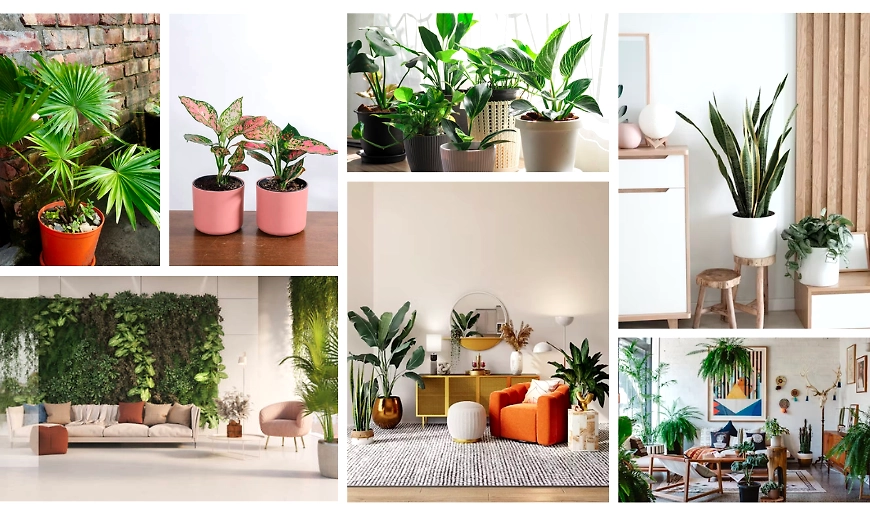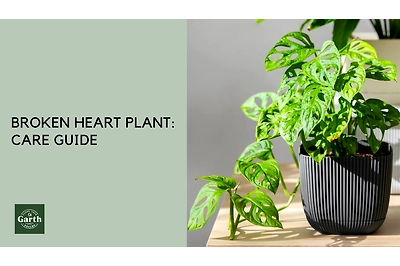Find the Most Beautiful Indoor Plants That Can Grow in Low Light
- 12 Feb, 2025

Your indoor spaces can be made lively and thriving with the use of indoor plants even in the absence of natural light. Most of these plant species do well in low-light conditions and can be proved very well within bathrooms.
With a well-selected combination of plants, a bathroom can become a lovely sanctuary. These champion plants of low light acclimatize themselves well to limited sunlight conditions, producing a spa-like environment and improving air quality. Whether an expert on plant care or just starting, you can take care of these shade-loving varieties.
This article gives you beautiful indoor plants that can create a beautiful garden inside, proving that sunlight is not required to be successful with pot plants.
Understanding Low-Light Conditions
Such low light levels normally between 50 and 150 candela are associated with very little solar direct sunshine, and this would create a very different growing environment from high- or direct-light environments.
- Common low-light areas within houses include:
- North-facing rooms
- Interior hallways
- Basements
- Room corners
- 8+ feet from windows
- Under staircases
- Bathrooms with little or no windows
A good sign that it is a low-light area is that shadows tend to be soft and diffused instead of sharp and well-defined. An even simpler test: Read comfortably without any addition of light during daylight hours, and the place is very likely to qualify as a low-light setting for shade-tolerant plants.
Indoor plants can flourish even in low-light spaces, but certain drought-tolerant varieties, like aloe vera, jade plant, and money plants, thrive particularly well with minimal maintenance. These plants prefer bright indirect light but can adapt to lower light conditions, making them ideal for bathrooms, hallways, and north-facing rooms. Using potting soil with good drainage is essential for their health, as it prevents waterlogging and promotes robust plant roots. Whether you're aiming to create a mini indoor garden or simply add a touch of green to your home, these resilient plants offer a low-maintenance solution, enhancing both aesthetics and air quality.
Ideal Indoor Plants for Low Light
These indoor plants are the best for low-light spaces where natural light cannot reach. These hardy plants have evolved with the skill to live in low light. Hence, they become a better option for dark corners of your home.
Low-light indoor plants, many of which do offer air-cleaning benefits, cleanse an array of indoor pollutants while at the same time beautifying your space. These adaptable plants, which can withstand various humidity levels, are versatile in that they can be used within different areas of the home, from bathrooms to office spaces.
The keys to success with low-light plants are understanding what they want for care and making conditions grow as closely as possible to their natural habitat. Each individual has its special features and growing pattern, which makes it more suited to one space compared to others.
1. Fiddle Leaf Fig, Known as Ficus lyrata
Thick, deeply indented leaves are well known for their dramatic effect in any interior space of the Fiddle Leaf Fig. These shiny leaves are 3 feet long at most, with a unique split that characterizes them. Even though the Fiddle Leaf Fig loves an ideal bright environment for much stronger growth, it can stand lower light conditions; growth will take place much slower than in brighter environments. To promote even growth, once a month, turn the plant to prevent it from leaning towards the light. Finally, regularly dusting the leaves with a damp cloth will enhance light absorption and will certainly keep the plant looking all lit.
2. Magai Pan Plant, Also Known as betel leaf plant
The lovely Magai Pan Plant is one of the close kin of the ZZ Plant family. It has beautiful glossy green leaves with a very erect growth habit. Thick leaves, waxy in nature, create a spectacular display and enhance any indoor environment. This is best for improving indoor air quality, and studies have shown that it cleans up household toxins impressively.
3. Syngonium White Plant, Also Known as Arrowhead Vine
Syngonium White, known also as Arrowhead, brings glamour to those dark corners with its leaf shapes. Leaves will initially be silver-white variegated and mature to deeper greens for a beautiful contrast. This little adaptable hardy plant can thrive in indirect-light situations like bathrooms or north-facing rooms. It prefers growing at a distance of 3-6 feet from light but still does well with partial shade.
The arrowhead plant Syngonium White also adds some glamour to dark corners with uniquely shaped leaves. The leaves will start as silver-white variegation and develop into deeper greens, giving a stunning effect. This flexible little plant does best in indirect-light situations such as bathrooms or north-facing rooms but will still grow well in darker spots. 3 to 6 feet away from light is most preferred by it but does not do so badly in parts.
4. Zamia Green Also known as ZZ Plant
The plant, otherwise called ZZ Plant, is Zamia green. It is a survivor in the whole plant kingdom. A truly beautiful backdrop is formed with its fleshy, shiny leaves that require very little care, making it the best for a busy plant owner. It grows without grumbling in a low-light experience that most houseplants would probably shun. Place it in windowless rooms, in the office, or bathrooms, and see how it thrives and keeps its beauty intact.
5. Spider Plant Also known as Chlorophytum Comosum
Spider plants are probably the loveliest and most exotic-looking foliage of all; their overhead features live strands that are drawn out and droop completely. This is possibly the most varied color plant, and its very specially variegated leaves—green and white striped—grow up to about a foot long. Spider plants grow fantastically in low-light conditions, but they would naturally thrive in moderate indirect light. Hence, place them 6-8 feet away from windows or in north-facing rooms. It will be after a slower growth and less luscious green of the leaves that the plant will signal if it requires more light.
6. Green Snake Plant Also known as Sansevieria trifasciata
It is linked with Sansevieria trifasciata; the Green Snake Plant is one of the most noticeable ones. It has long, sword-like leaves, about three to four feet tall, that meet vertically and give the impression of having grown up simply to defy gravity. This architectural beauty presents dark green bands across its leaves, and boldness makes a statement in any room type. It is easy to care for because of how strong it is. Known as the "indestructible plant," it survives even the most difficult conditions, including being placed in dark corners and neglected.
Conclusion
A home becomes alive even in the darkest corners with a thriving indoor garden with low-light plants. These are the plants that celebrate how nature chooses to live and thrive in such conditions. Always remember that you complement your selection of plants with the specifications of your area. Begin with one or two plants, take time to read their care requirements, and soon you will watch your indoor garden grow into a lush and green sanctuary—even in the darkest corners of your home.


